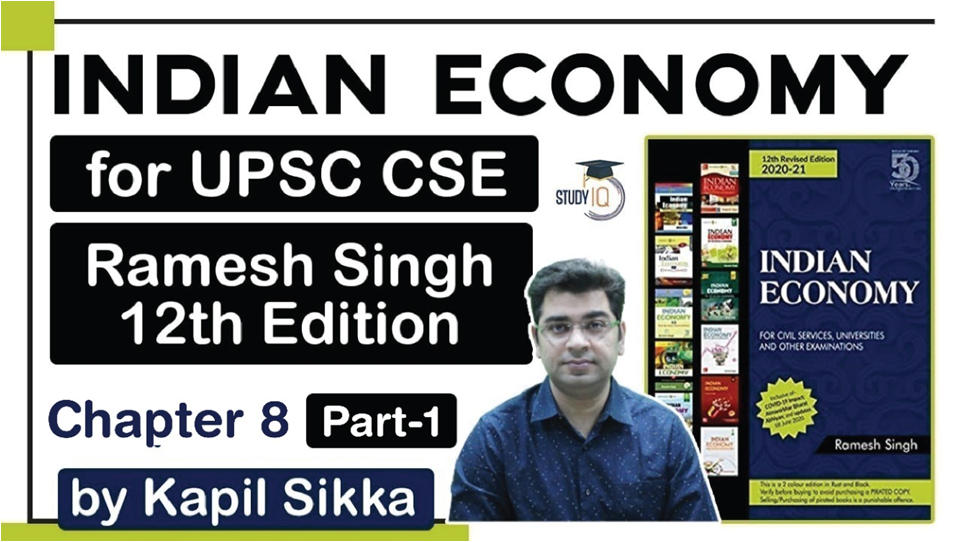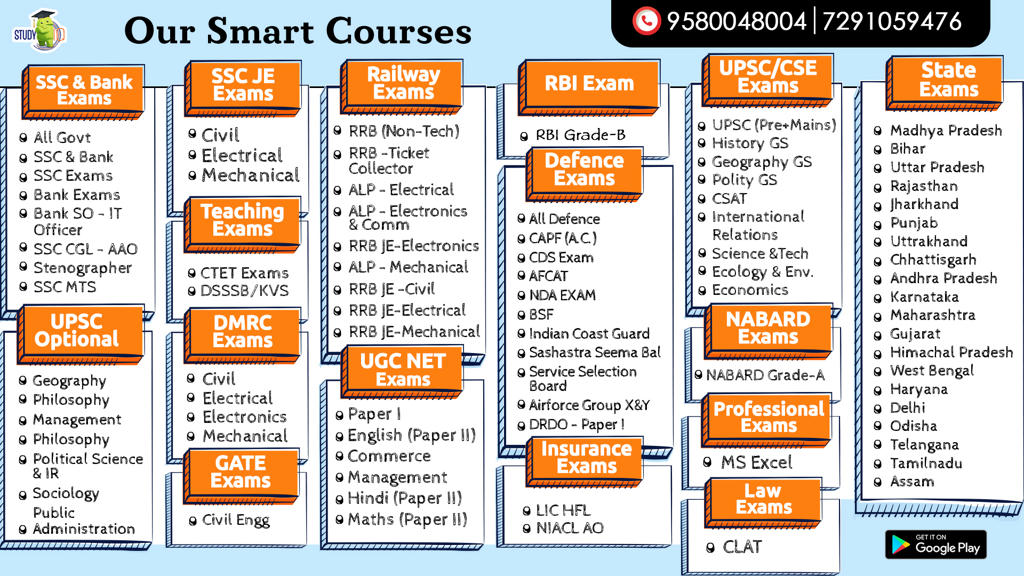Table of Contents
Agriculture And Food Management
Contents of Chapter
- Introduction
- Kharif & Rabi
- Food Philosophy of India
- Land Reforms
- Green Revolution
Agriculture
- Important Sector for Economy
- 4 per cent of the GDP
- After Independence agriculture accounted for 55.4%
- Provides livelihood for 48.7%
- Underdeveloped countries still have very higher share
- Norway, UK 2 %
- Biggest Private Sector- No Income is taxed
- Biggest unorganised sector
- Provides jobs to more than 90 per cent share of the total unorganised labour-force (roughly 40 crs)
- Emerged as a significant agri-exporters of, rice, meat, oil meals, spice, guar gum meal and sugar.
- The share of India’s agricultural exports and imports in the world trade in 2017 were 2.50 per cent and 1.50 per cent (WTO data)
- It is acclaimed correlation that 1 per cent increase in the agricultural growth leads to 0.5 per cent increase in industrial output (growth) and 0.7 per cent increase in the national income of India
- The Industrial sector was selected as the ‘prime moving force’ post independence
- Market failure resulted in failure of Industries.
- The Harrod-Damor Model Failed to boost income.
- Government of India announced agriculture as the prime moving force of the economy in 2002.
- A total of 1 per cent of the cropped area in the country is dependent on monsoon for their irrigational
- As per Second Advance Estimates for 2019-20, total foodgrain production in the country is estimated at record 291.95 million tonnes which is higher by 6.74 million tonnes than the production of foodgrain of 285.21 million tonnes achieved during 2018-19.
Kharif & Rabi
- Arabic Language Words : Used widely in India, Pakistan & Bangladesh
- The crops that are sown in the rainy season are called kharif crops. (also known as the summer or monsoon crop) in India.
- Kharif crops are usually sown with the beginning of the first rains in July, during the south-west monsoon season.
- Kharif & Rabi
- The crops that are sown in the winter season are called Rabi crops. (also known as the “winter crop”) in Pakistan and India.
- Crops that are grown in the winter season, from November to April are called Rabi Crops.
- Some of the important rabi crops are wheat, barley, peas, gram and mustard.


Food Philosophy in India
- Divided in Three Phases
- First Phase
- Second Phase
- Third Phase
First Phase
- 3 Decades
- Green Revolution is part of it
- Made India Self Sufficient
Second Phase
- Access to Food (Economical Condition)
- High Buffer Stocks vs High Hunger
- PUCL Case 2001
- Seventh Largest Exporter (2002)
- Vagaries of Green Revolution
Third Phase
- Post Globalization Era
- Opening of World Trades
- Non-Ecological Inputs
- Climate Change
- Search for Sustainable Farming
Land Reforms
- Phase 1
- Immediately after Independence
- Removing institutional discrepancies
- socio-economic inequality
- Increasing agricultural production
- Abolition of intermediaries
- Tenancy Reforms
- Land Ceiling Act
- Land Consolidation
Reasons of Failure
- Land as Social Prestige
- Lack of Political Will
- Rampant Corruption
Land Reforms and Green Revolution
- Why It Failed to invoke reforms
- Diabolic relation
- Caste Lobbying
- PL480
- International Pressure
Phase 2 of Land Reforms
- Economic Reforms
- Land titles to holder
- Land Acquisitions Policy
- National Land Records Modernisation Programme(NLRMP)
- Change in leasing policies
- Digitization of leasing records
- The Right To Fair Compensation And Transparency In Land Acquisition, Rehabilitation And Resettlement Act, 2013
- It proposed to put in place a transparent, effective and speedy laws regarding the need of land reforms related to leasing and acquisition.
Model Agriculture Land Leasing Act 2016
- Legalise land leasing to promote agricultural efficiency, equity
- This will also help in much needed productivity improvement in agriculture as well as occupational mobility of the people and rapid rural change.
- This is very important step for land reforms through which needs of landlord as well as lease holder have been taken
- Through this act, the landlord can legally lease the land with mutual consent for agriculture and allied activities. In this act, it has been taken care that in any circumstances the leased holders’ claim on land will not be valid.
Model Agriculture Land Leasing Act 2016
- Lease holder may receive institutional loan, insurance and disaster relief so that he may invest more and more in agriculture.
- Allow automatic resumption of land after the agreed lease period without requiring any minimum area of land to be left with the tenant even after termination of tenancy, as laws of some states require.
- Incentivise tenants to make investment in land improvement and also entitle them to get back the unused value of investment at the time of termination of tenancy.
- In order to resolve the dispute between the landlord and lease holder, the provision of “Special Land Tribunal” has been made in the Civil Court.
Agriculture Holdings: The 10th Agriculture Census 2015–16
- the Census is conducted after every 5 years.
- the average size of land holding is decreasing due to rapid fragmentation caused by high population growth.
- The total area under farming fell from 159.6 million hectares (Mha) to 157.14 Mha.
- Small and marginal farmers account for 86.2 per cent of all farmers in India, but own just 47.3 per cent of the crop area.
- Semi- medium and medium land holding farmers account for 13.2 per cent of all farmers, but own 43.6 per cent of crop area.
- Feminisation of Agriculture 12.8 per cent to 13.9 per cent
Indian Economy | Free PDF






















 WhatsApp
WhatsApp